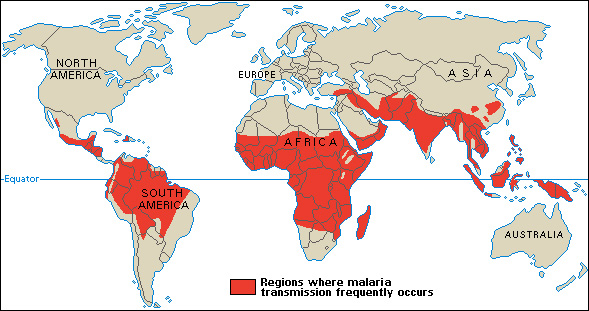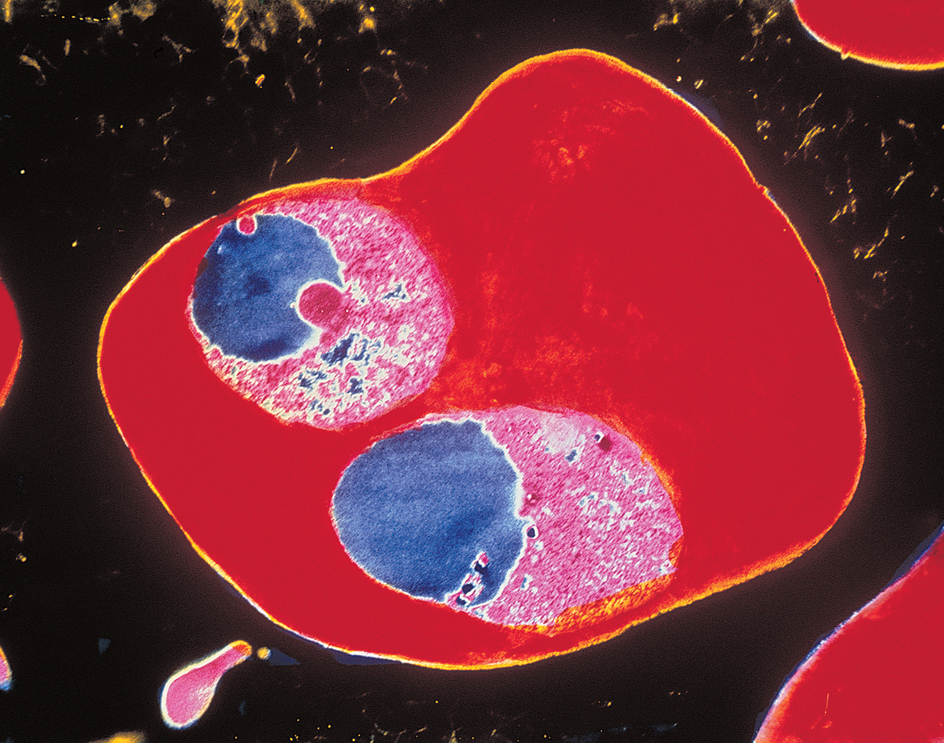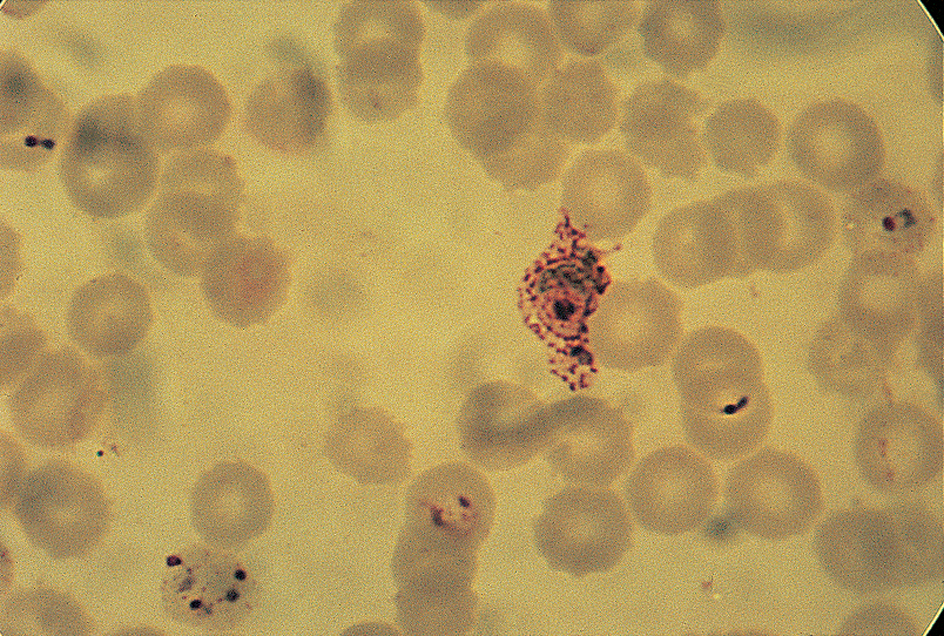Malaria is one of the most widespread and threatening parasitic diseases that affect human beings. The disease is common in tropical and subtropical regions. Malaria is caused by infection with parasites called Plasmodia (in the singular, Plasmodium). The parasites are one-celled organisms called protozoans. They are transmitted to human beings through the bite of the female Anopheles mosquito.

Scientists estimate that about 250 million people are infected by malaria parasites and more than 600,000 people die of malaria each year. In addition to the deaths and suffering caused by malaria, the disease harms economic and social development in many countries. The disease slows economic growth because it makes many people too ill to work. In addition, the cost of treating malaria takes funds that are needed for other development.

There are five types of malaria that commonly infect humans, each caused by a different species of Plasmodium. The five protozoans that cause malaria are P. falciparum, P. vivax, P. ovale, P. malariae, and P. knowlesi. (The P. stands for Plasmodium.)
Symptoms.
A malarial attack lasts several hours and is accompanied by fever, headache, muscular pain, and nausea. The attacks come in a specific pattern determined by the life cycle of the particular parasite. P. falciparum, P. vivax, and P. ovale cause attacks of chills and fever that return about every 48 hours. In P. malariae infections, symptoms return about every 72 hours. P. knowlesi has a 24-hour life cycle. Between attacks, the infected individual usually feels better but is often weak and anemic.
Worldwide, P. falciparum causes the most serious disease and the most deaths. Victims become weaker with each attack, and many die if untreated. P. falciparum can cause severe complications, including respiratory problems, kidney damage, cerebral malaria, and placental malaria. In cerebral malaria, red blood cells infected with parasites stick to small blood vessels in the brain, causing seizures, coma, and death. Placental malaria interferes with the transfer of oxygen from the mother to the developing fetus, causing the unborn baby to develop poorly or die.
P. vivax and P. ovale are not associated with severe illness. Malaria due to these parasites may go away without treatment. However, the parasites can lie dormant and symptoms may reappear after a long period of apparent freedom from the disease. Severe illness with P. malariae or P. knowlesi is also uncommon. P. knowlesi is endemic (naturally occurring) among certain monkeys in Southeast Asia. However, it is increasingly transmitted to humans by way of mosquito bites. It often causes mild illness, but may rapidly progress to severe illness due to the short life cycle of this parasite.

Spread.
The life cycle of the Plasmodium protozoan has three stages. The first stage begins when a mosquito bites someone who has malaria. Plasmodia enter the insect’s body and reproduce in its stomach. The protozoan young find their way into the mosquito’s saliva.
Loading the player...Malaria growth
The second stage occurs after the mosquito bites another person. Plasmodia from the mosquito’s saliva enter the person’s blood. They travel to the liver, where they multiply and form clumps of parasites. After several days, these clumps burst and release new Plasmodia.
During the third stage, each Plasmodium invades a red blood cell, where it multiplies again. The infected blood cells eventually rupture and release large numbers of Plasmodia, which invade additional red blood cells. This cycle of invasion, multiplying, and cell rupture continues, causing the periodic attacks of fever that are typical of malaria. An attack occurs each time the red blood cells rupture. Some Plasmodia enter another mosquito’s body when the mosquito bites an infected person, and their life cycle begins again.
Treatment and prevention.
Quinine, a drug derived from the bark of the cinchona plant, has been the main treatment for malaria since the 1600’s. Most cases can be cured with quinine and similar, synthetic drugs, such as chloroquine, primaquine, and mefloquine. However, some varieties of P. falciparum have become resistant to these drugs. In the 1980’s, scientists developed a drug called artemesinin from an herb used in traditional Chinese medicine. The drug is used with others to treat malaria and prevent development of resistant varieties of Plasmodia.
In 1998, the World Health Organization (WHO), an agency of the United Nations, launched a program to reduce malaria worldwide. The program emphasizes drug treatment and prevention of mosquito bites. It includes the limited use of insecticides, such as providing mosquito netting treated with insecticides for people’s beds.
A vaccine known as RTS,S is somewhat effective at preventing malaria cases caused by P. falciparum. In 2021, WHO recommended this vaccine for use in Africa, where this variety of malaria is a major health concern. RTS,S is the first malaria vaccine. Researchers hope to develop more effective vaccines, as well as vaccines against more varieties of malaria.
